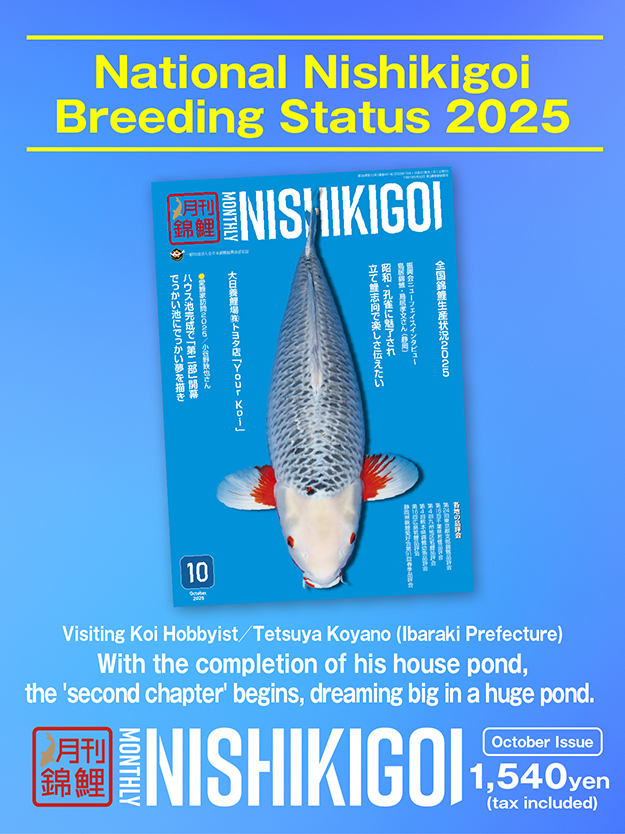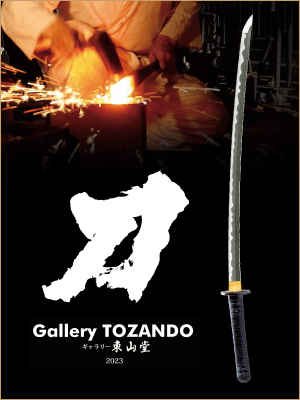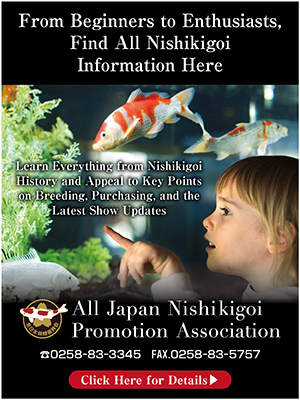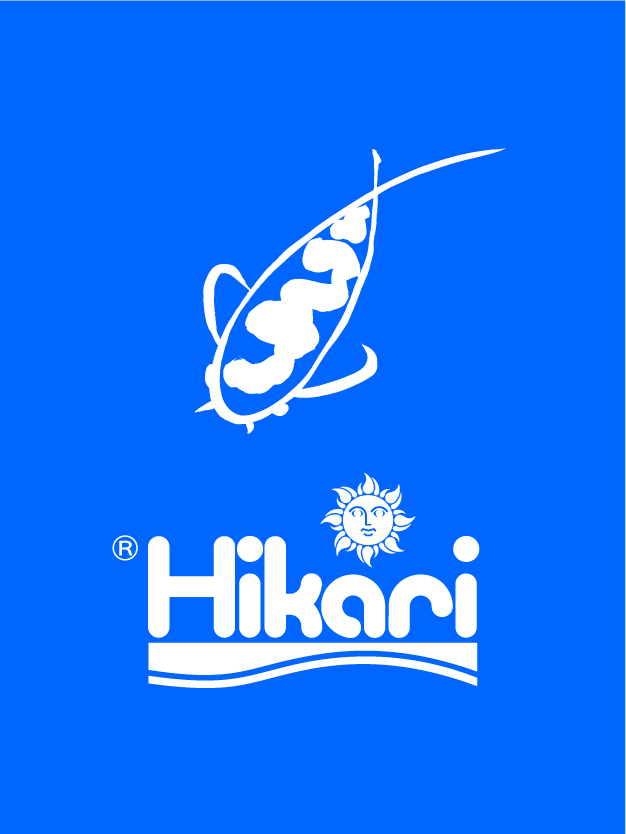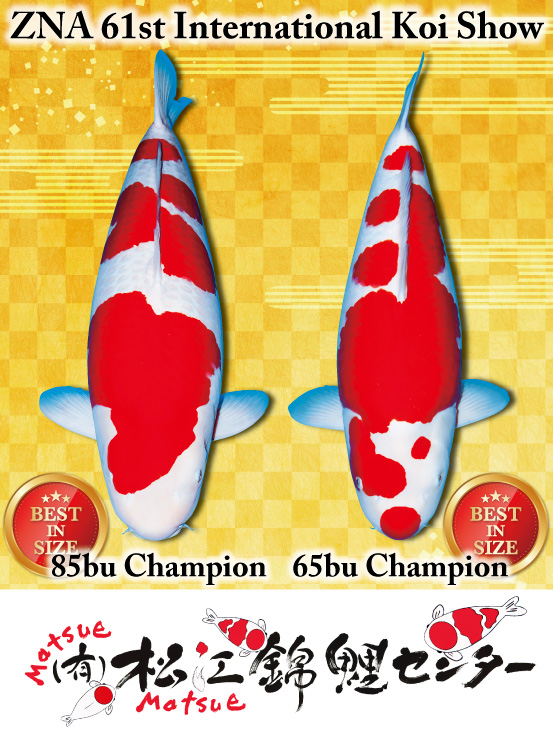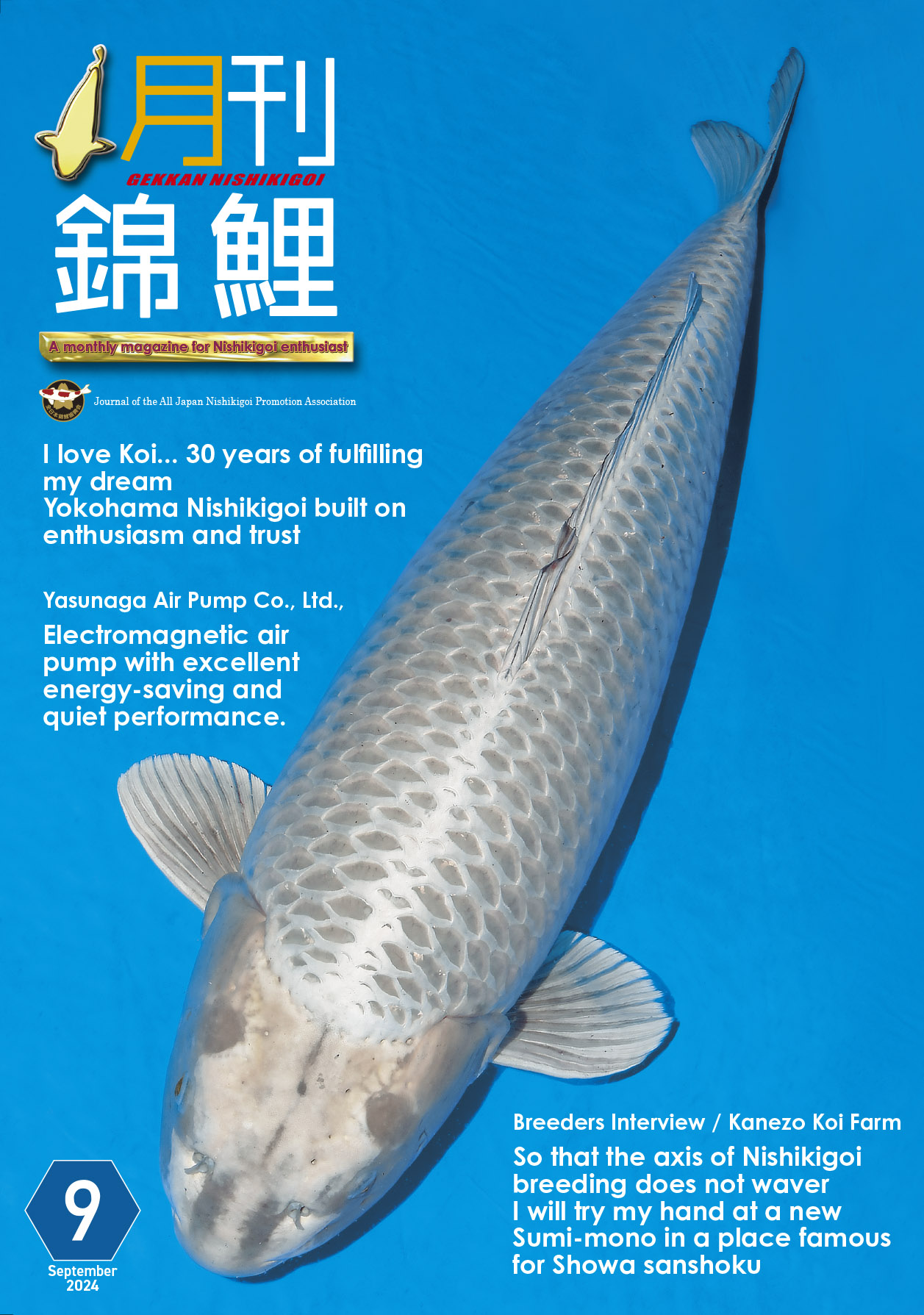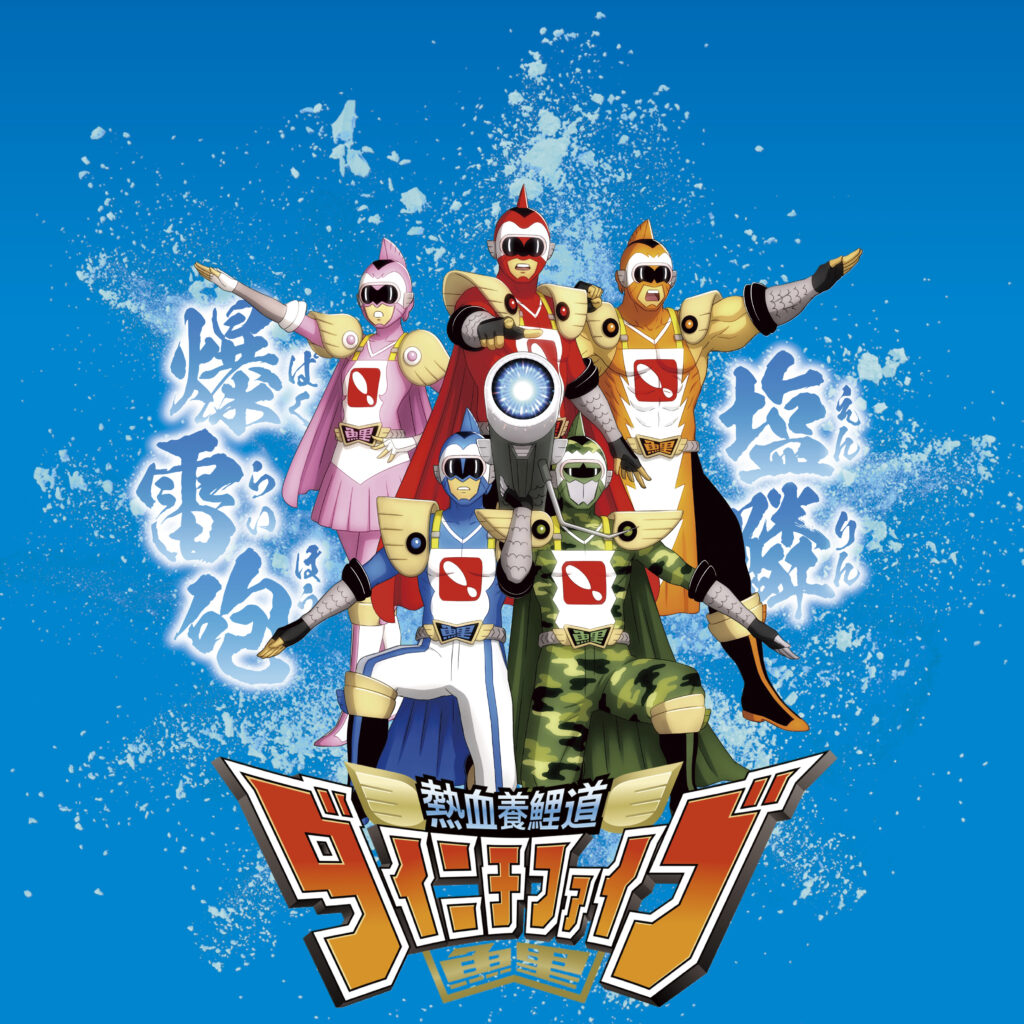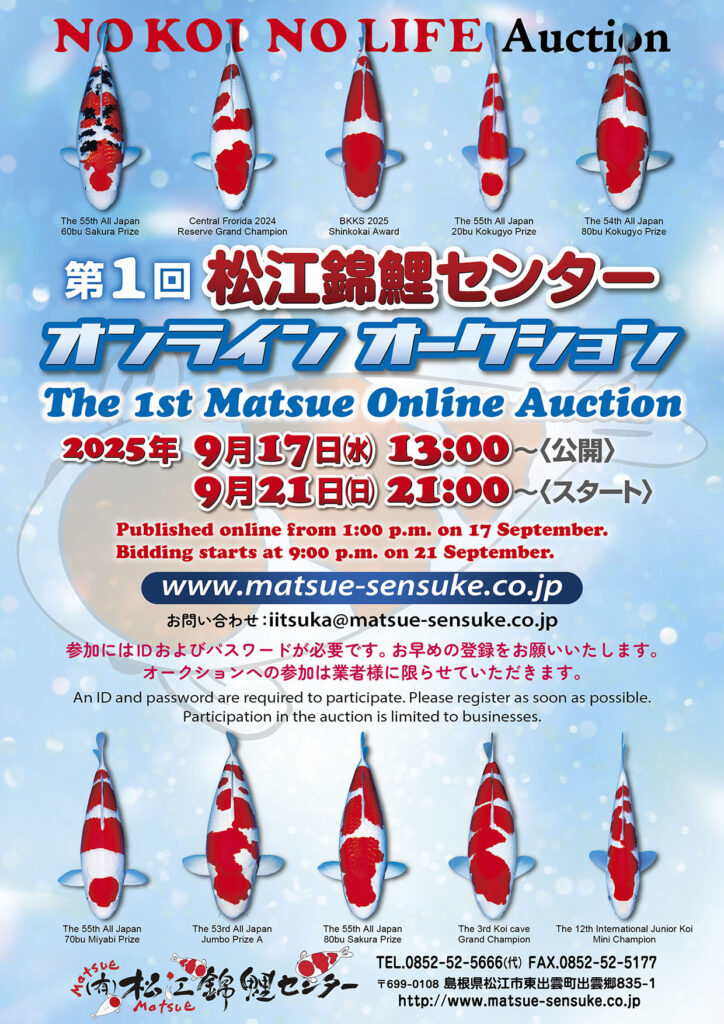— Skin starts to shine?
Toshinobu: If ginrin only shines on the surface of the scales, it tends to fade or get crushed as the skin thickens around 3 or 4 years of age. However, ginrin from Uedera that I keep doesn’t have that issue. The ginrin wraps down to the underside of the belly. I focus on the strength and way the ginrin shines when selecting bloodlines, but Karashi koi themselves have a trait of enhancing ginrin when crossed. That’s why Karashi koi and ginrin have an excellent compatibility.
— Is the production ratio about half and half between regular and Ginrin?
Toshinobu: Yes. All the female parents are ginrin, and we cross them with Wagoi or ginrin males, so ginrin appears frequently, and we keep more of them.
— Looking at Tamausagi swimming in the pond, they all have well-developed bodies.
Toshinobu: They have excellent feed absorption efficiency. In terms of feeding volume, Kohaku and Showa require more, but when Karashi koi blood is introduced, they seem to absorb nutrients more efficiently and gain weight more easily. If you keep them for 5 or 6 years, I think they will grow to around 85 cm. Since I selected koi that I am confident will definitely reach that size. Since I have selected koi that I am confident will definitely reach that size, they should grow accordingly.
— Karashi koi offer many advantages in breeding improvement, but are there any drawbacks?
Toshinobu: One concern is how pectoral fins will develop as they grow. Karashi koi tend to have poor pectoral fin shapes, and pectoral bones are more prone to breaking. While this is a risk, it doesn’t seem to be a significant issue with the koi I have kept so far.
Aiming for a deep yellow without spots.
Making it easier to improve through lineage expansion.
— What improvements would you focus on in the future?
Toshinobu: When indigo hue base appears by Goshiki’s traits, kiwa of the patterns become more defined. I had been breeding with yellow for many years, but kiwa always turned out blurry. When I considered defining those kiwa, I realized that crossing with Goshiki would help create sharper kiwa. After the cross, I started seeing koi with well-defined kiwa. However, the goal is to achieve ‘deep yellow,’ so I must continue improving the colour tone. However, red spots tend to appear more easily when the pigmentation is too intense. I am breeding koi with red eyes and pattern traits from a different line to reduce red spots while monitoring the colour tones. I will need to work with two lines: one focusing on koi that lean toward yellow with fewer red spots and another solidifying the breed as a distinct variety.
— I see.
Toshinobu: It’s not precisely a backcross, but I’m considering intentionally crossing with orange-coloured koi, not just lemon-coloured ones.



